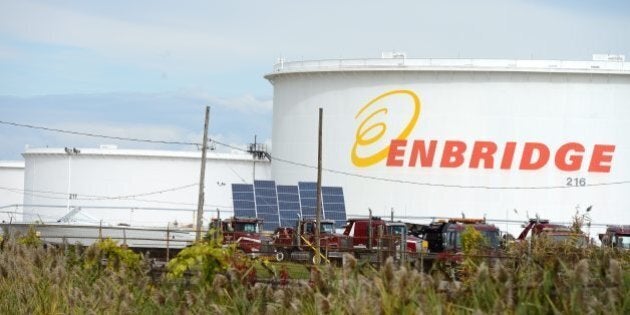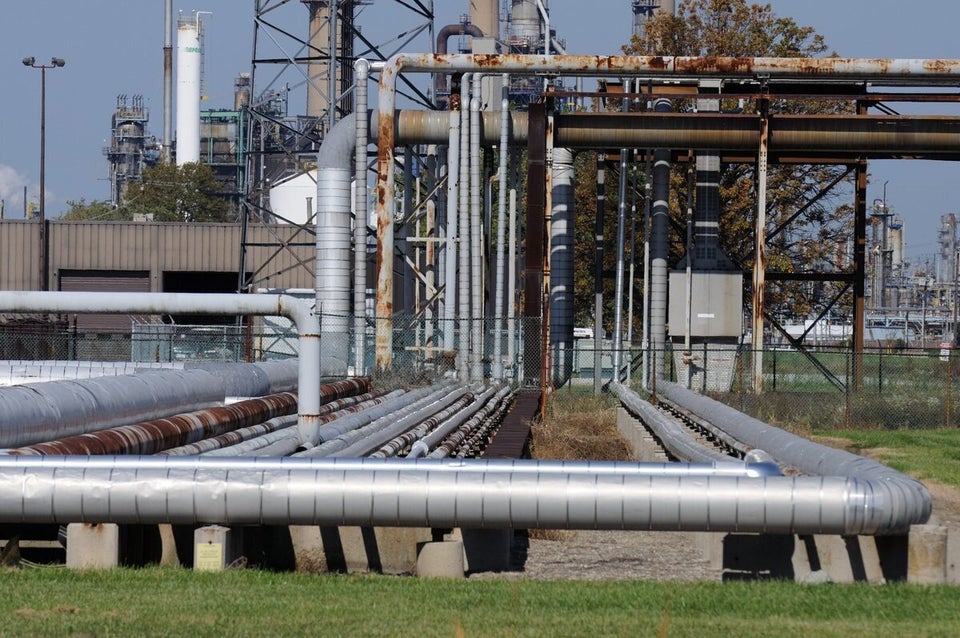
Environmental and citizen groups in Quebec are demanding the National Energy Board (NEB) explain why it refuses to order a hydrostatic safety test of Enbridge's Line 9 pipeline, a west-to-east oil pipeline that could come online as early as next month.
A hydrostatic test or hydrotest is a commonly used method to determine whether a pipeline can operate safely at its maximum operating pressure. The test involves pumping water through the pipeline at levels higher than average operating pressures. Enbridge is reversing the flow of the 39-year-old Line 9 pipeline, which previously carried imported oil inland from Canada's east coast, and will increase its capacity from 240,000 to 300,000 barrels of oil per day.
"[The NEB] claims to be transparent and to listen to what the public is saying, yet despite having all the required information in their possession for over six months, it refuses to render a written and reasoned decision on whether or not it will impose hydrostatic tests on the length of Line 9B," Lorraine Caron, spokesperson for the citizen group Citoyens au Courant, said in a joint statement.
When the NEB, Canada's federal pipeline regulator, approved the Enbridge pipeline project in March 2014, the board stated it could order a hydrostatic test of Line 9 if it felt the integrity of the 39-year-old pipeline was in question. So far the board has chosen not to exercise this option and has said very little as to why.
"Refusing to make a decision public means the NEB wants to keep the public in a state of ignorance. This only contributes to diminishing public confidence in the NEB," Steven Guilbeault, executive director of Equiterre, said in the joint statement.
Citoyens au Courant, Equiterre, l'Association Québécoise de Lutte Contre la Pollution Atmosphérique, Environnement Jeunesse, Climate Justice Montréal, Nature Québec, Sierra Club Québec and Environmental Defence jointly filed a request for clarification with the NEB on its hydrotest position Tuesday.
The half dozen Quebec-based groups are concerned the untested pipeline could have disastrous consequences for residents of southern Ontario and southern Quebec, especially if the line leaks or ruptures while transporting oilsands (also called tarsands) bitumen.
Recent bitumen spills in Canada and the U.S. have proven extremely difficult and costly to cleanup.
''The NEB as a quasi-judicial court has the responsibility and obligation to divulge an official decision so that its motives can be analysed and weighed by the public," Karine Péloffy, director of the Centre québécois du droit de l'environnement, said in the joint statement.
The province of Ontario asked the NEB to require a hydrotest of Line 9 during the regulatory hearings on the project in 2013. A provincial commission authorized by Quebec to investigate Line 9 also recommended a hydrotest.
Earlier this month, the Greater Montreal Area passed a resolution also asking the NEB to order a hydrostatic test of the pipeline.
"Our municipal officials have done their job by asking for these tests," Caron previously told DeSmog Canada.
Line 9 runs though a densely populated corridor from Sarnia, Ontario through Toronto and on to Montreal. The pipeline is of similar age and design to the Enbridge pipeline that ruptured in 2010 near the Kalamazoo River in Michigan.
The Kalamazoo spill, as it is known, was one of the largest inland spills in the U.S. history and cleanup costs have exceeded $1 billion.
An international pipeline safety expert told DeSmog Canada in 2013 Line 9 is "high risk" for a rupture due to extensive stress corrosion cracking on the pipeline, as outlined in an Enbridge engineering assessment of the line.
U.S. investigators concluded pipeline stress corrosion cracking most likely caused the Kalamazoo pipeline spill.
"I do not make the statement 'high risk for a rupture' lightly or often," Richard Kuprewicz, a pipeline safety expert with over forty years of experience in the energy sector, said in an interview with DeSmog Canada. "There are serious problems with Line 9 that need to be addressed."
Kuprewicz predicted there was a "90 per cent" probability of Line 9 rupturing if a hydrostatic test of the pipeline was not conducted.
Enbridge expressed concerns during the regulatory hearings a hydrotest could potentially damage Line 9. The Calgary-based pipeline company also claims its inline inspection tool can detect serious stress corrosion cracking threats.
- Derek Leahy, DeSmog Canada
ALSO ON HUFFPOST:
